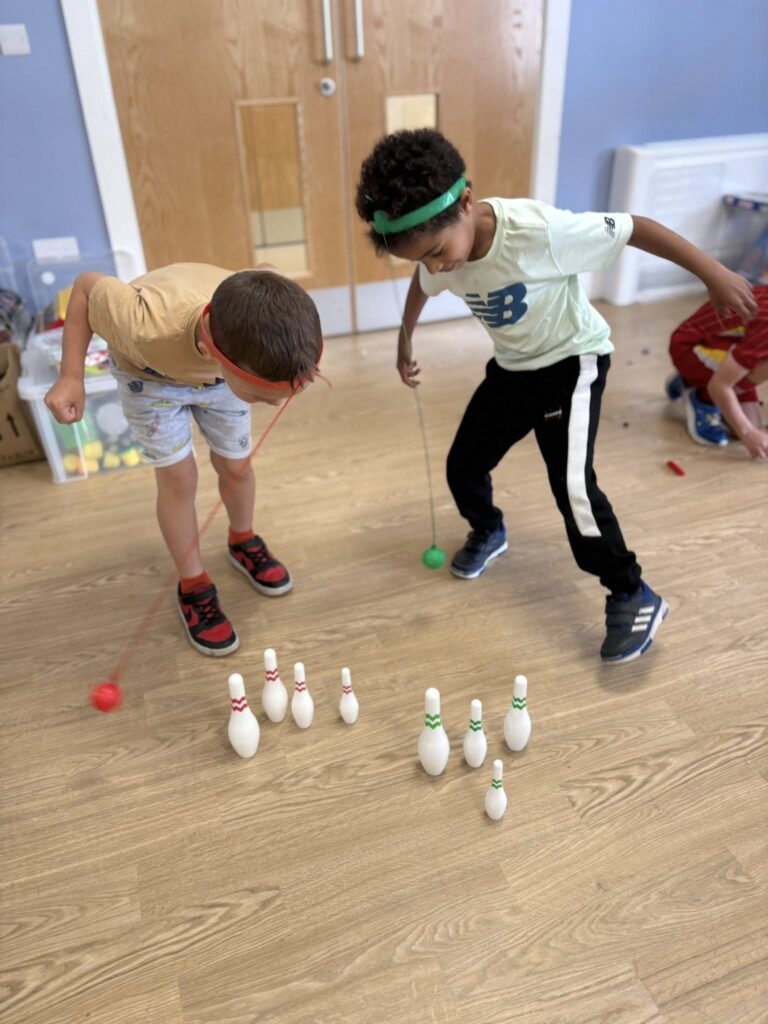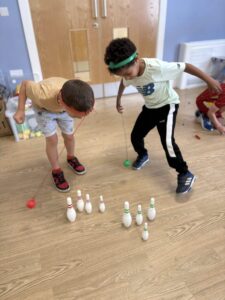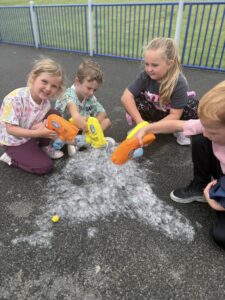Meta Description: Discover how movement-based learning builds confidence, focus, and social skills in children. Backed by research and real-life examples from FitKids IOM.
Introduction: More Than Just Playtime
In an age where children are surrounded by screens and academic pressure, confidence can take a hit. But there’s good news: confidence doesn’t just come from praise or grades — it grows through action, experience, and movement. That’s where movement-based learning comes in. At FitKids IOM, we’ve seen how combining fun and fitness can create lasting self-belief in children aged 4 to 11.
This blog dives into the science, the benefits, and how you can support your child’s confidence journey through movement and play.
What Is Movement-Based Learning?
Movement-based learning is an educational approach that integrates physical activity into everyday learning. Rather than sitting still and absorbing information passively, children are encouraged to learn through actions — jumping, dancing, balancing, running, and more.
At FitKids IOM, we embed this idea into every part of our day:
- Obstacle courses to teach problem-solving
- Dance sessions to encourage self-expression
- Team games to develop social intelligence
- Yoga and calming routines to foster emotional regulation
The goal? Keep the body moving so the mind can thrive.
The Confidence Connection: Why Movement Matters
Confidence isn’t something kids are born with — it’s built through experience.
Here’s how movement-based activities contribute to confidence development:
🟩 1. Achievable Challenges Build Self-Efficacy
When a child finishes a physical challenge — like climbing over a structure, completing a relay race, or mastering a new dance — they realize, “I did it!” This sense of achievement is key in building self-efficacy, the belief in one’s own abilities.
🟩 2. Physical Play Encourages Risk-Taking (In a Good Way)
Children learn to take safe risks — like trying a new activity or joining a team — and this translates into emotional resilience. When they fall and get back up, or fail and try again, their inner self-belief strengthens.
🟩 3. Group Activities Nurture Social Confidence
Teamwork games encourage:
- Communication
- Turn-taking
- Leadership
- Mutual encouragement
Even shy children begin to open up when they feel included and supported by peers and mentors.
Backed by Science: What Research Says
Scientific studies support what we see every day at FitKids IOM:
- A 2019 study published in Frontiers in Psychology found that physical activity improves executive functioning and emotional regulation, which are both linked to confidence.
- Movement stimulates dopamine and serotonin — brain chemicals that boost mood, motivation, and focus.
- Physical education programs have been shown to increase academic performance, especially when combined with play-based, structured routines.
Real-Life Stories from FitKids IOM
We’ve watched countless kids grow in confidence over the summer holidays. A few examples:
🟨 Hassan, Age 7: Quiet and unsure on Day 1, but by Day 3, he led his group in an obstacle course relay — cheering others on like a mini coach.
🟨 Emily, Age 9: Once afraid of group activities, now volunteers to help younger kids in team games — even guiding them through new moves in dance break sessions.
🟨 Kai, Age 6: Struggled with transitions, but with our calm-down yoga circles, he now manages change better and enjoys trying new things each day.
These aren’t just “cute moments” — they’re milestones in emotional growth.
How to Reinforce Confidence at Home
You don’t need to be an expert to encourage movement-based confidence building at home. Try these simple strategies:
✅ 1. Celebrate Effort Over Outcome
Praise how your child tries, not just whether they succeed.
“I love how you kept going, even when it was hard!”
✅ 2. Let Them Lead
Have your child teach you a new movement game, routine, or obstacle idea.
✅ 3. Encourage Creative Movement
Turn music on and let them freestyle. Or ask them to invent a game with cones, soft toys, or chalk.
✅ 4. Set Small Challenges
Create mini indoor or backyard obstacle courses. Challenge them to beat their own time or invent new versions.
Why FitKids IOM Champions Movement-Based Learning
We believe every child should feel strong, joyful, and confident in their body. That’s why our:
- Summer Clubs include dance, fitness games, and creative crafts daily
- Birthday Parties are centered around active fun and team play
- Future school programs will combine physical education with imaginative group learning
Our team is trained not just to supervise, but to mentor, coach, and cheer on every child.
Final Thoughts: Confidence Is Learned Through Movement
Children don’t build confidence by being told they’re great. They build it by doing, moving, failing, and trying again. Whether it’s jumping into a slime race or leading a dance, every little action counts.
With the right environment — like the one we offer at FitKids IOM — kids walk out not just stronger, but prouder of who they are.
Call to Action:
📅 Want to see your child grow in confidence this summer?
👉 Book a place at our Summer Club 2025 today
Limited spots available. Unforgettable memories guaranteed.




